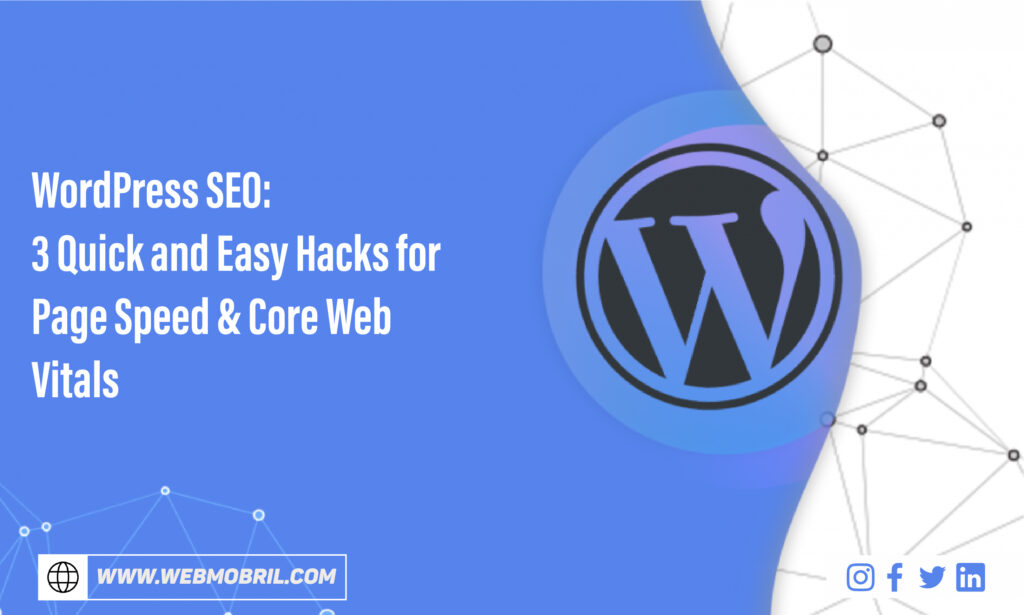Google’s Page Experience Update that started rolling out in June is almost near completion (by the end of August). You are reading this article, which means you are likely among those website owners and online marketers, struggling to tackle the issues you’ve been ignoring or looking for some ways to enhance the work you’ve done.
However, many in the industry believe that it will start out fairly light, becoming more influential over time. Remember how Google’s John Mueller linked it to cooking? He said during the announcement, “you can think of it as if you’re adding a flavoring to a food you’re preparing. Rather than add the flavor all at once into the mix, we’ll be slowly adding it all over this time period.”
To us, it is more than a simple cooking recipe. This update, however, seems more like the HTTPS update. The day it launched, no overwhelming impact was seen. But can you tell how many HTTP sites do you see ranking today?
Some of you may counter this technically, pointing this as just a co-relation and not causation. It is anyway easy switching to HTTPS, and nearly all new sites do it, and thus it cannot be said that HTTP sites were ranked out of the top spots.
Nevertheless, if you have an insecure site (HTTP), a sea of sites are far ahead enjoying the advantages over you. It might seem a small advantage, but those sites are having it on their side.
So, considering what follows to be a few quick and easy hacks to get your Core Web Vital numbers up, here are three of them.
Core Web Vitals Hack 1: Cloud Flare
The first hack we will talk about is Cloud Flare, although it is not WordPress-exclusive. Many of you might not be aware that Cloud Flare offers a free service that includes a lot of speed enhancements.
Make sure you check the current speed before starting the Band-Aid path of Core Web Vital and Page Experience hacks on your site. You can notice the subsequent changes in Pagespeed insights of the site with two different ways of using Cloud Flare hack.
Initially, you can start by enabling the free plan and speed optimization components. A slight amount of work including, the account setup will show a huge difference in the speed of your site.
Try the other way, upgrading to Pro ($20/month) and tuning all but one setting, you can see a 15-17% increase in the speed. Who would mind investing a little to achieve such a promising result? However, the choice is completely yours whether you want to go with the free or pro version.
Well, the settings enabled included polish image optimization and mirage.
Having your site in WordPress, you have the option to install the plugin, and apply the setting: Enable Automatic Platform Optimization. What result to expect?
You may notice First Contentful Paint and Speed Index both improved, but the Largest Content Paint reduced. Trying and testing every possible settings, won’t really show any improvement in the result. It means not everything would work so always be testing.
Next, we have another WordPress plugin- Hummingbird
Core Web Vitals Hack 2: Hummingbird
Now you may ask, why Hummingbird? The answer is, Hummingbird isn’t just a simple caching plugin, it also allows you to connect with Cloud Flare, to modify some settings remotely.
Coming back to the topic; Hummingbird’s automated optimization won’t give an impressive result and may disappoint if you understand what you’re looking at. You will have to spend some time, doing some manual settings.
Play around to figure out which things to move inline and which things will break functions on your site if treated incorrectly. It is recommended to test multiple pages including, product, contact, homepages, and pretty much at least a page from each layout/template you’re using.
Brainstorming with the settings and testing might ultimately help with a jump you can see as numbers in the PageSpeed Insight section.
Lastly, we have…
Core Web Vitals Hack 3: Asset Cleanup
Asset Cleanup is another WordPress plugin and also a quick fix provider of improving Core Web Vitals.
The main function of this plugin is to let the site owners stop scripts from loading on specific pages or sets of pages. The suggestions come from the audit display page. However, you can see the disclaimer that says they don’t directly impact the performance score.
Upon installation and setup, spend some time in settings and where their testing mode is handy. There would be some scripts you’ll simply know whether you need them or not, but others you may not be sure for and want to test. If you are on development or in testing mode, you may want to disable all of them and then enable them one-by-one, testing functionality for each along the way.
After about 20 or 30 minutes of repeating the process in each section, you may notice impressive progress in speed.
But what if you combine all three hacks?
Combining These 3 Hacks
Combining did not seem to work well. On combining any two of these hacks, scores and real-world timings get worse. But if you’re testing each, you can try testing various combinations and even some other plugins.
Rest, you can wait till the rollout finishes and see how the websites behave with Google’s Page Experience Update.

